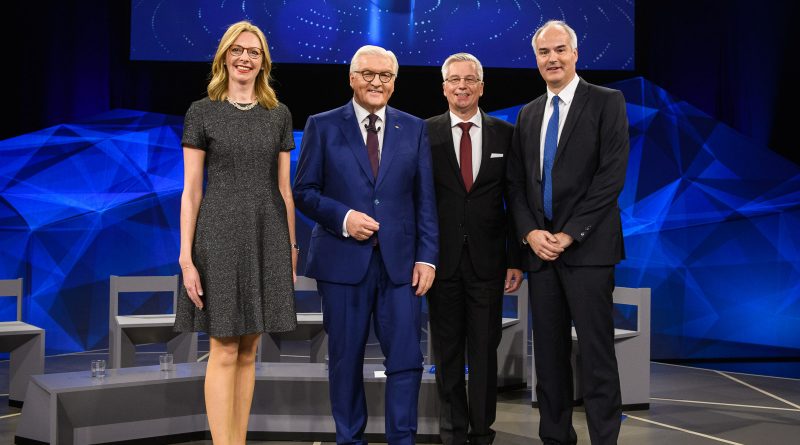Pioneering research into the use of CO2
Researchers from RWTH Aachen University, the Max Planck Society, and Covestro AG have reached the finals of the 2019 Deutscher Zukunftspreis (“German Future Award”) for their groundbreaking work on the use of carbon dioxide as a raw material.
A large interdisciplinary team led by Professor Walter Leitner, Dr Christoph Gürtler, and Dr Berit Stange has developed a process that uses CO2 in the production of plastics, significantly reducing the demand for crude oil.
“It is a great honor to be among the finalists for the Deutscher Zukunftspreis, which provides a further boost to our research at RWTH Aachen University and the Max Planck Institute for Chemical Energy Conversion,” said Leitner on Wednesday evening in Berlin. Leitner is chair of Technical Chemistry and Petrochemistry at RWTH and director of the Max Planck Institute for Chemical Energy Conversion. Fellow nominee Christoph Gürtler is responsible for new processes and products at Covestro AG, while his colleague Berit Stange is in charge of the transition to a circular economy for polyurethane plastics.
Vast amounts of carbon dioxide are emitted wherever fossil fuels are burned or processed – whether in the industrial, mobility, or energy sector. The chemical industry, however, requires carbon – a component of the greenhouse gas carbon dioxide – as a building block for a wide range of products, including plastics. It is usually extracted from crude oil, natural gas, or coal. The nominated team has taken the first step towards closing the carbon cycle by using a portion of such carbon dioxide emissions for industrial production.
This use of CO2 is one of the “dream reactions” being explored at the CAT Catalytic Center in Aachen, a joint facility of RWTH and Covestro. In the process, part of the petroleum-based raw material for chemical production is replaced by carbon dioxide. Up to 5,000 metric tons of polyol can already be produced annually in Covestro’s pilot plant. This substance is then further processed into polyurethanes, which are used as foam in mattresses for example.
This use of carbon dioxide was made possible by a breakthrough in catalysis research. Since carbon dioxide is chemically inert and reluctant to form chemical compounds with other substances, a tailor-made catalyst was needed to control the reaction for it to be economical and efficient. Catalysts cause reaction partners to form compounds by lowering the activation energy for conversion and steering it in a desired direction. The experts at RWTH and Covestro have found a suitable catalyst for incorporating CO2 into the polyol.
As Walter Leitner explains: “The new process illustrates how chemistry can contribute to a sustainable future with the help of closed carbon cycles. The cooperation with Covestro in the CAT Catalytic Center at RWTH Aachen University is a prime example of what collaborations between fundamental academic research and industrial innovation could look like. Along with Christoph Gürtler and Berit Stange, we represent many of our colleagues who have contributed to the success of this project with their creativity, competence, and commitment.”
Photo: F.l.t.r.: Dr Berit Stange, German Federal President Frank-Walter Steinmeier, Professor Walter Leitner and Dr Christoph Gürtler

